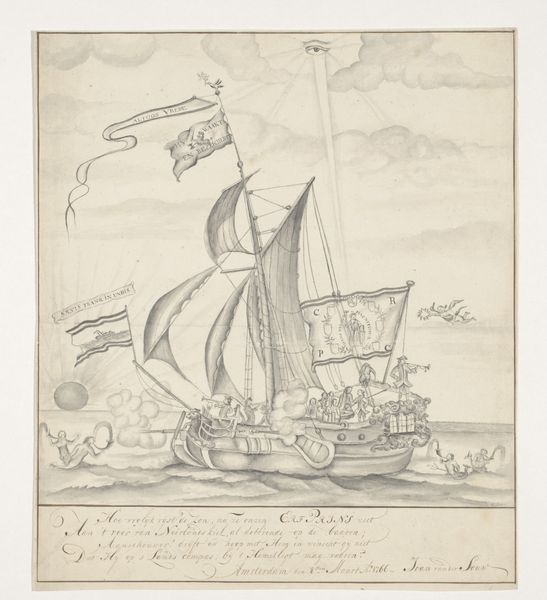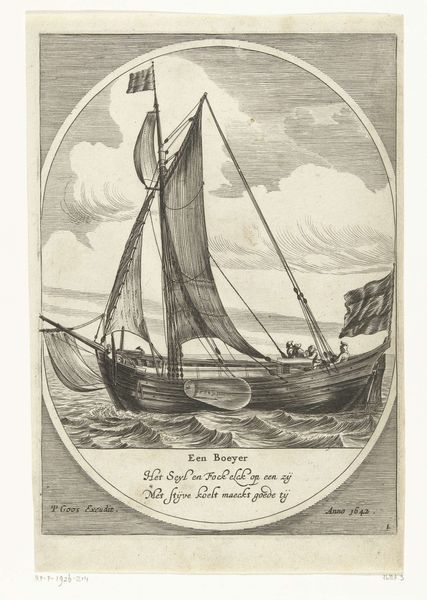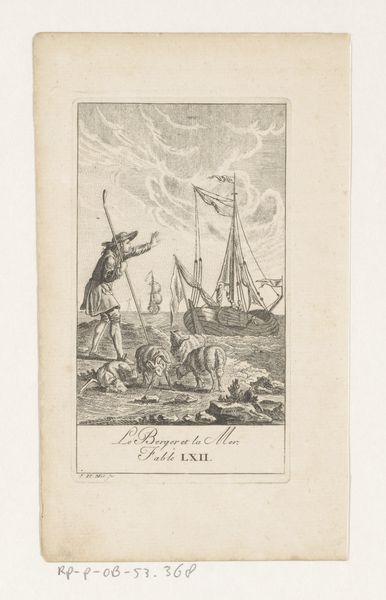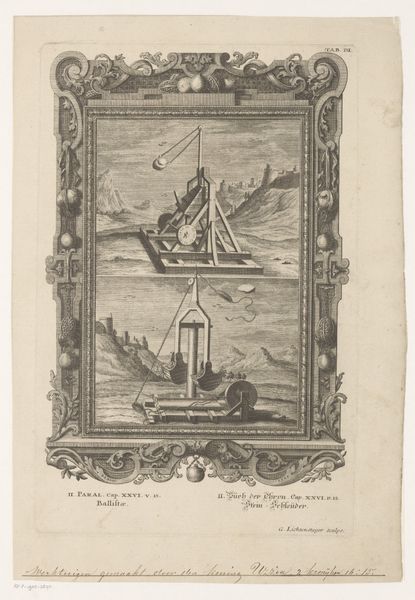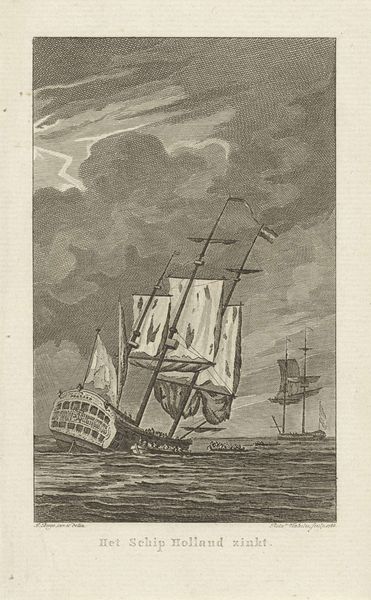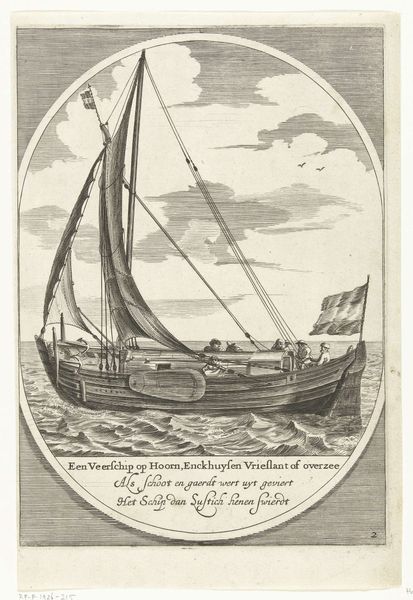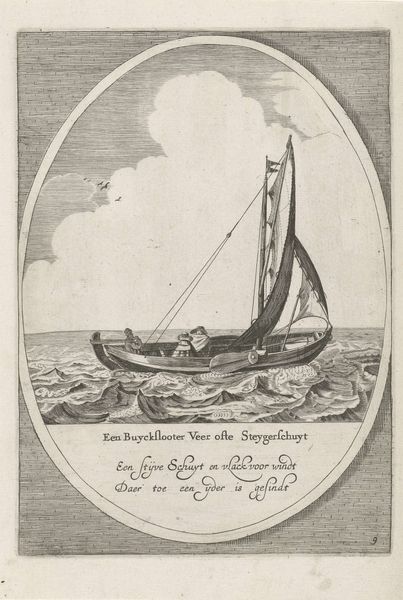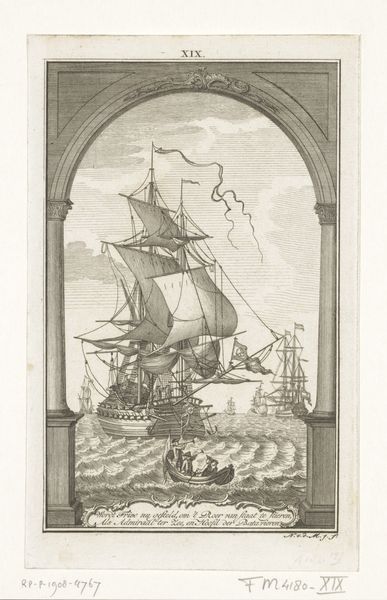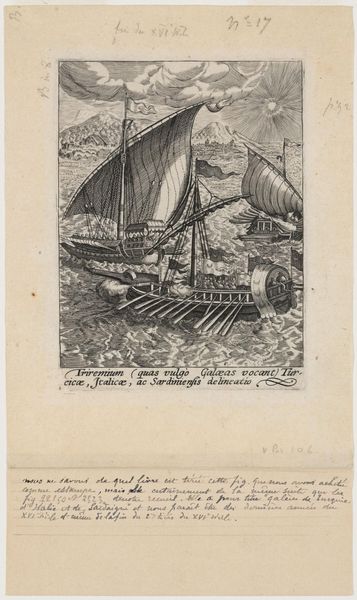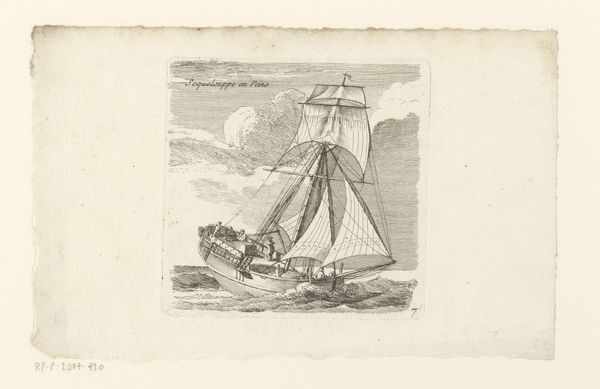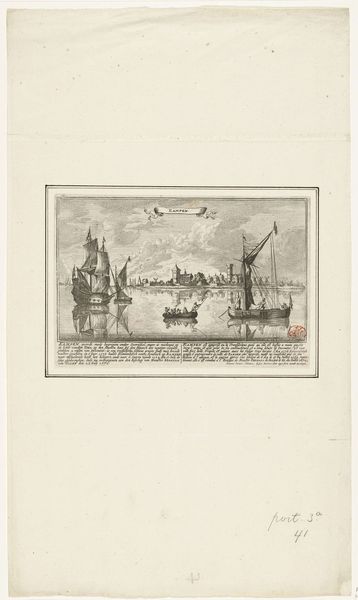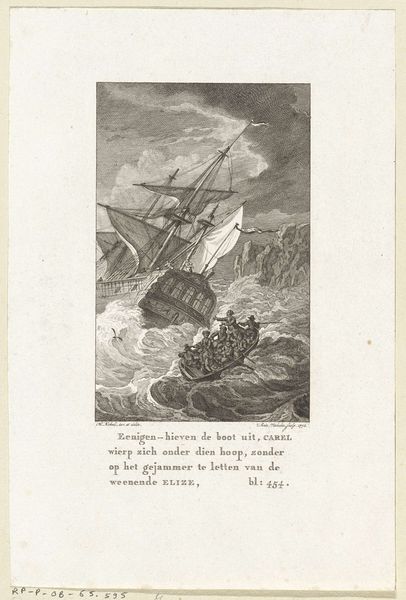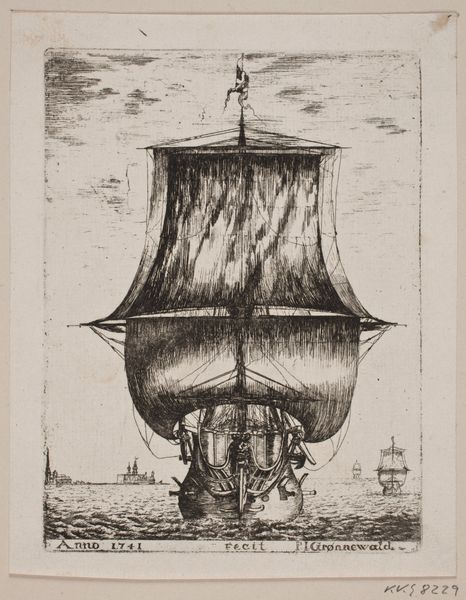
Decoratie bij het huis van de heer J. van der Souw te Amsterdam, 1766 1774 - 1776
0:00
0:00
Dimensions: height 194 mm, width 115 mm
Copyright: Rijks Museum: Open Domain
Editor: This is "Decoration at the house of Mr. J. van der Souw in Amsterdam, 1766", an engraving by Noach van der (II) Meer, dating from around 1774-1776. The ship under a divine, all-seeing eye, sailing towards the sun, gives a really strong impression. What social forces do you see at play here? Curator: The print clearly references the power and prestige associated with Dutch maritime trade. The prominent display of the ship suggests wealth, exploration, and the political power linked to naval strength. How does the artist depict this power, and for what audience? Editor: Well, the size of the ship and the presence of many people on board speaks to success, but the divine eye and angelic figures seem almost allegorical. Curator: Precisely! Think about the context of the Dutch Republic. It was a nation built on trade, and imagery like this print reinforced a sense of national identity. The sun could represent new beginnings, or the enlightenment, shining on a nation favored by God. Who, exactly, is favored by God in this context? Editor: I see. It almost feels like propaganda now. Did these kinds of prints actually sway public opinion, or were they more of a symbolic statement? Curator: That is a great question! Disseminating information and molding perceptions are central to visual culture. The print served not just as decor but also as a form of visual rhetoric. What kind of societal impact did imagery like this ultimately have? It prompted discussions on identity and authority. Editor: Wow, looking at it that way gives me so much more to think about than just aesthetic appeal. Thanks for the fresh perspective! Curator: It's fascinating to analyze how art becomes intertwined with politics and social values over time, isn't it? Now I want to study similar art prints of the same period.
Comments
No comments
Be the first to comment and join the conversation on the ultimate creative platform.
